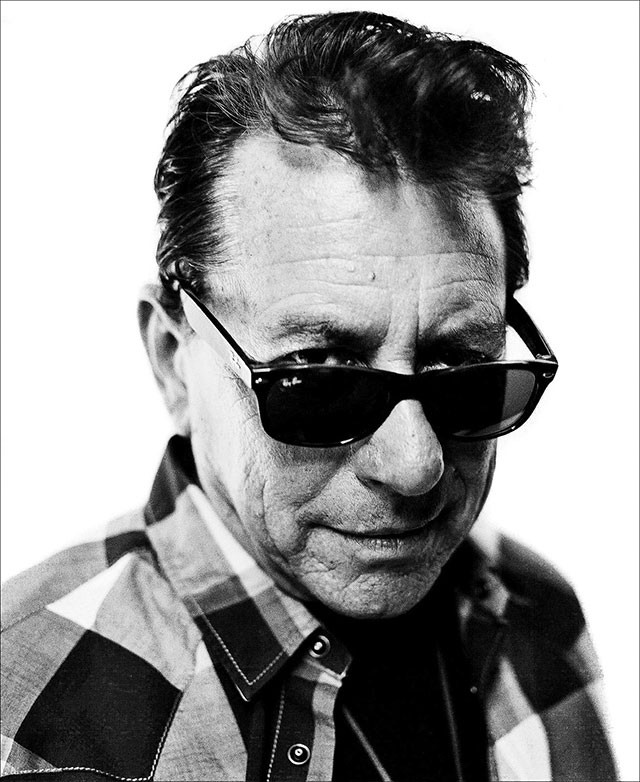With an adjunct gig singing backup for The Clash and his tenure with Los Super Seven, cowboy rock ‘n’ roller Joe Ely already has an unrivaled résumé among Texas Music Hall of Famers. With his newest release, B4 84, Ely separates himself from his Lone Star peers with a musical and technological anomaly: an album made on the Apple II computer, recorded over a decade before the idea of personal computers took off.
At the bleeding-edge intersection of music and computing, Ely sat down around Christmas of ’82 with his new toys: an Apple II, an Alpha Centauri synth and a Roland 808 drum machine. Known now for its omnipresent claps and snares in hip-hop, the 808 sounds alien and exciting as the rhythm track on Ely’s twangy tunes.
On the shelf for more than 30 years, Ely revived B4 84 this year for release on his own Rack ’Em Records, complete with liner notes by Apple’s Steve Wozniak. With the new wave foundation on keys and drums meeting Ely’s Amarillo rock ‘n’ roll, B4 84 plays like the soundtrack to an unmade Tarantino space-western or a Lone Star reboot of Repo Man. Over the phone, we talked with Ely about the exciting final product and historic process of B4 84.
Why did you pick up the Roland 808, Alpha Centauri and Apple II?
It was really just because they were there. Before the early ’80s, there was no such thing as a drum machine. And then with this little sequencer that plugged into the Apple II, all of a sudden that could remember your notes. It was actually pre-MIDI, it was a foreshadowing of MIDI. It was all a big mystery. Basically I was just a folk singer with a weird interest in the new music stuff. So I got an Apple II Plus in ’82 and started working with a friend of mine [guitarist Mitch Watkins].
We started messing around with the drum machine and the Alpha-Centauri synthesizer. It’d use the slots in the Apple as its main computing power. It was a lot of fun. We messed around for several months then all of a sudden we started looking at it saying, ‘Wait a minute. These almost sound like songs.’
Can you recall what other musicians thought about the project?
They thought we lost our minds. Before that time I had pretty much recorded with either acoustic guitars or electric guitars in a traditional matter. They wondered why we were going to all this trouble. We actually wondered that ourselves a few times.
Any frustrating moments in particular?
I remember once when I’d worked all night on the Apple and Alpha. By sunrise I got the melody and everything, and the computer crashed and lost everything that I’d done the last 12 hours. My wife caught me dragging my computer outside by the power cord with a shotgun in my hand. I was going to blow it to bits and she talked me out of it.
How did you get Apple co-founder Steve Wozniak to write B4 84’s liner notes?
I met Wozniak around the time that I was making this record; I met him in ’83. He came to Austin for a computer club who invited him to come and speak. I went up to introduce myself and told him I recorded music on the Apple II. He was real interested. I had started in about ’85, I started a little bulletin board which was the pre-cursor to the internet, but only just text one letter at a time. You’d dial it up on a telephone with a telephone modem. That was about 10 years before the internet as we know it. Wozniak had a bulletin board himself and we’d talk back and forth late at night.
Why did B4 84 sit for so long?
MCA Records liked the songs but they thought we were crazy the way we recorded it. They wanted to re-record the whole thing in LA. So we re-recorded the whole thing and it changed the whole nature of it. It didn’t feel the same as when we had done it ourselves. The record (1984’s Hi-res) didn’t do very well and in about a year and a half, I just left MCA Records and started recording stuff at my house with an 8-track.
A couple years ago I decided to re-arrange the tracks and put in some other tracks we had done at that same time. I dug into this old computer art we’d done and found the cover picture and made it come to life.
















